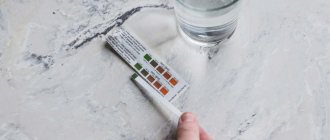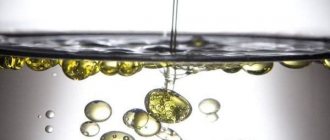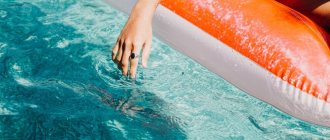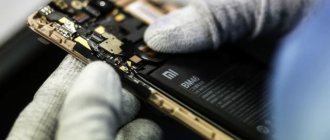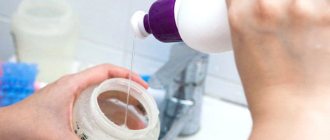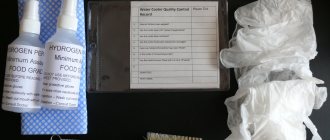Increased rigidity can and should be fought. Therefore, we will consider in detail the existing softening methods, starting with why to soften water, continuing with which method to give preference in a given situation, and ending with what kind of equipment to choose to implement the plan.
Let us immediately note that even the intake from an artesian well is not 100% pure; it still contains impurities (albeit in a lower concentration) that should be gotten rid of. The presence of these undesirable additives can be detected both in laboratory conditions - the most accurate option - and by taste or even visually: by low foaming, the appearance of plaque on the surfaces of plumbing fixtures, and increased consumption of household chemicals.
What is drinking water softening
This is the process of purifying drinking or household liquids from salts by reducing their concentration to acceptable values. In other words, this is a decrease in the degree of rigidity, which can be:
- temporary - with an increased content of magnesium and calcium sediments (bicarbonates);
- constant - with other impurities that do not precipitate into a solid state during boiling, that is, with chlorides, sulfates, nitrates.
Softened water, what is it? In essence, this is a liquid obtained as a result of normalizing the totality of the physical and chemical properties of the medium used, bringing it to recommended and safe for use indicators. Reduces to processing during which unwanted ions and other harmful substances, including nitrogenous and sulfuric acid compounds or pesticides, are removed.
Preparation of water for various needs
Let's consider methods of softening liquid for washing dishes and other needs.
- Baking soda. When it is added to water, a reaction occurs that leads to the breakdown of salt and acid compounds. Take 2 teaspoons per 10 liters, food grade or 1 tsp. soda ash. The liquid must be allowed to stand until sediment settles.
- Vinegar and citric acid. It is not recommended to prepare water for drinking using this method. Hardness parameters will decrease in proportion to the increase in acidity. Without harm to health, the method can be used in cosmetology. The recipe is as follows: 1 teaspoon of citric acid or a tablespoon of vinegar is mixed with 2 liters of liquid. Wait 5-7 minutes, and now the resulting liquid can be used.
- Table salt. Salt diluted with water destroys calcium and magnesium, thereby reducing the hardness of the water. The solution is not suitable for drinking water due to altered composition and taste properties. The method is well applicable in dishwashers.
- Starch - per liter of liquid you need to take 1 teaspoon of the substance and mix well. The resulting solution has a beneficial effect on the skin. The method is suitable for swimming or washing clothes.
Need for mitigation
It should be carried out to:
- Remove metallic or bitter taste.
- Eliminate the possibility of sedimentation so that the water can be bottled or used for the preparation of alcoholic beverages, juices, and other food industry products.
- Protect household appliances from scale: excess salt will certainly be deposited on the walls and heating elements of boilers, washing machines, kettles and will first reduce their performance (and therefore increase energy costs for heating by 15-20%), and then cause a breakdown.
- Minimize the consumption of powder and other detergents containing surfactants. It is with surfactants that unwanted impurities will interact, binding them and reducing their effectiveness.
- Get rid of plaque on the surfaces of taps and mixers, toilet cistern, bidet body and other plumbing fixtures, as well as tiles. Deposits not only look unsightly and are difficult to wipe off, but also gradually destroy even hard materials.
- Prevent clogging of industrial systems - scale reduces the throughput and heat transfer coefficient of pipes, gradually clogging them, which results in an increase in fuel consumption for equipment maintenance.
And, most importantly, softening must be carried out to protect your body from the negative effects of excess salts.
Tips and tricks
- To soften the water, oxalic acid can be used. It is beneficial for indoor plants, as it fights harmful bacteria, improves microflora and cannot accumulate in the soil. But it has a negative effect on human skin, damaging its cover, so use when washing hair is not recommended.
- To determine water hardness, use the services of a laboratory where samples are brought.
Water quality control is very important, so it is better to use available and optimal methods for this purpose. Such actions will protect your family from negative influences.
What methods of water softening do you prefer? Reveal your secrets in the comments.
The dangers of drinking hard water for people
Excess magnesium and calcium negatively affects the condition:
- hair (as a result of washing it) – growth slows down, hair loss increases, dandruff develops, and bald patches appear;
- teeth – they crack and become loose, the enamel chips and carious zones form;
- bones - they become more brittle and susceptible to arthritis and arthrosis.
Constant deposits provoke the formation of stones that disrupt the normal functioning of the kidneys, liver, and intestines. At the same time, gastric motility also decreases: digestion slows down, more digestible food goes into fat reserves, which contributes to rapid weight gain. Over time, cardiovascular diseases also develop: being in a latent form and not manifesting themselves, they turn into pericardium, epicardium, endocardium or myocardium.
Interacting with soap and shampoos, salts precipitate, clogging pores. Hence the feeling of tight and dry skin after showering or washing. The fat layer gradually disappears, oxygen does not pass through the epidermis, which causes redness and other irritations, rashes, pimples, and acne appear. We have to restore microflora and, in general, health with the help of masks, creams and other means, often expensive, although we need to fight not the consequences, but the cause.
Separately, we note that hard water is also harmful to animals: the excess salts it contains accumulate in the bodies of our pets and lead to digestive problems, decreased immunity, and poor-quality increase in volume.
The same dogs or cats lose their appetite, to the point that they completely refuse their previously loved food, get sick more often (and can catch a cold very easily), they gain weight, but this is not muscle or fat, but accumulations of fluid, already in middle age stones appear, which means problems with the kidneys and liver. Cows' milk yield decreases - from 14-20 to 10-14 liters per day - and their mood also deteriorates, which negatively affects the taste of the milk (it becomes bitter).
Signs of increased rigidity
There are a number of signs of high water hardness:
- poor foaming of detergents;
- formation of white plaque and scale;
- stains on dishes and linen after washing and laundering;
- When drinking, a bitter taste appears;
- fabrics quickly shrink and wear out after washing;
- With regular use, diseases of the kidneys and genitourinary system appear.
Water hardness standards
1.5 m3/h For process water
1.5 m3/h For process water
MBFT-75 Membrane for 75GPD
According to the degree of salt concentration, the working environment can be:
- soft – up to 2 mEq/l;
- normal – 2-4;
- average – 4-6;
- high – more than 6-8 mEq/l.
If we talk about quality standards, in Russia they are such that the limit value for drinking and eating is 7 mEq/l. The World Health Organization is much more principled in this matter and allows an indicator of only 2.5 mEq/l, which, with some amendments, is also relevant for EU countries. Such an excess of WHO recommendations, more than twofold, necessarily plays a negative role in the long term, resulting in the harmful consequences already described.
Water softening options (TOP-best)
To make water softer, you can try a water softening technique based on the synthetic exchange of resin ions. Regenerating filters with ion exchange resin – diluted table salt – saturates the resin with sodium.
In such a situation, metal ions and hardness are removed. It is quite possible to use special equipment to soften water. It will be possible to soften water both for domestic conditions and for industrial needs.
When a constant supply of soft water is required, then duplex softeners are used, and the filters operate in self-acting mode.
Establishing softening procedures requires time and water consumption.
- SanPiN standards 2.1.4.1074.01 set the hardness of drinking water to no more than 7 g per liter.
- WHO standards for water hardness are 1.0–2.0 mg/l.
- For drinking, you can use water with a hardness of no more than 0.2 mg/l.
- For production needs, it is allowed to use water with a hardness of 0.5 mg/l.
Ion exchange water softeners
Structurally, each of them is a plastic cylinder partially filled with granular polymer resin. The latter acts as a filter, releasing charged sodium particles and absorbing magnesium and calcium. Passing through it, the working environment is purified as a result of a substitution reaction.
AMETHYST - 02 M up to 2 cubic meters/day.
Aeration unit AS-1054 VO-90
Main table dispenser AquaPro 919H/RO (hot and cold water)
Naturally, over time, the ion concentration decreases, and it needs to be restored. To do this, a chloride solution is pumped through a special salt tank. During regeneration, liquid is not supplied, so when you need to organize a continuous intake, install two cylinders at once and turn them on one by one.
Traditional methods of softening
Our grandmothers also faced problems with hard water, and they at least knew about the dangers of drinking it. Therefore, there are enough simple and accessible methods of softening in the treasury of folk wisdom. Here are the most popular ones.
Boiling (and not in an electric kettle, but on the stove, since the desired effect of decomposition of hardness salts can be achieved only with prolonged heating)
After this, the liquid should be allowed to settle for a day, and only then carefully drain it, without stirring up the sediment at the bottom.
Freezing is a more gentle method that will allow you to at least partially preserve the beneficial substances in the water and not spoil the taste. Place a transparent container of water in the freezer and monitor it for freezing. As soon as 75-80% of the total volume turns into ice, the vessel is taken out and the liquid residue is drained - salts are concentrated in it, which give high hardness.
Advocacy. You just need to pour water into any container and put it away from sunlight for 3-6 days
After this, you need to carefully drain the top layers without disturbing the sediment. This water is not suitable for drinking, but it is quite suitable for everyday use.
Adding silicon or shungite - minerals that literally absorb hardness salts. Our great-grandfathers lined wells with silicon plaster to soften the water stored in them. We have access to a simpler method: we just need to place sterile silicon or shungite stones in a container of drinking water. Natural absorbents will absorb salts within 2-3 days, although many recommend increasing this period to a week.
Saponification is one of the ways to prepare water for washing. You will need to rub 15-20 g of laundry or toilet soap and dilute it in 0.5 liters of water until completely dissolved and foam appears. This amount is enough for a bucket of liquid, after which you need to let everything sit for at least a night - the soap will react with the salts and send them to sediment. In the morning, the solution is carefully poured into another container and boric acid (2-3 tbsp) is added to it.
How to make water softer at home
There are several options.
For consumption:
- boil - but in this way you will only turn dissolved substances into scale and will not kill all microorganisms (viruses will survive);
- add neutralizer tablets - but at an affordable price, they are characterized by low productivity.
For household needs:
- use acid-based chemicals - but they will not actually reduce the hardness, but will only prevent harmful components from settling on the internal surfaces of the equipment and damaging the heating elements; Therefore, they are suitable for a washing machine or dishwasher, but not for a coffee machine.
A much more practical solution is to use filters, which can be of several types. The simplest of them are:
- Jugs are containers with two reservoirs: liquid is poured into the upper one, which then passes through the cleaning cartridge and enters the lower one, from which it is taken. They are easy to set up and use, but only cope with low hardness (up to 2 mEq/l).
- Flow-through – installed between the points of supply and final consumption, for example, under the sink; pass the working medium through themselves, removing impurities from it due to the active action of the resin they have in stock. Suitable for low and normal hardness (up to 4 mEq/l).
If the task is more complex or larger in scale, more serious equipment is required.
In aquarium
Choosing fish for an aquarium begins with finding out what type of water is comfortable for them - soft or hard. Cichlids love hard water. But if you put a fish that is genetically accustomed to soft water in an aquarium with hard water, its kidney channels will become clogged with salts and it will die.
Recommended for you:
How to make an air freshener and flavoring agent from soda and essential oil with your own hands
Ichthyologists advise softening the water so as not to harm the health of the fish or provoke their toxic poisoning. Signs by which you can determine that something is wrong with an aquatic inhabitant: swallows air from the surface of the water, protrudes scales and gills, and rushes about.
The alkaline nature of sodium bicarbonate reduces acidity. This is necessary for aquarium water, since biological activity leads to the formation of acids.
Hardness can be reduced by adding soft water, which has been softened with soda. If you pour sodium bicarbonate into a container, it will not affect the hardness, but will cause illness in aquatic inhabitants.
How to soften water from a well
When you take it from the deep layers and in large enough volumes to meet the needs of a country house or cottage, it is worth using one of the following options:
- Ion exchange unit - has two reservoirs, in the first of which there is a viscous substance that replaces charged particles, and in the second - a saline solution. Consistently passing through these containers, the liquid is saturated with sodium and becomes purer.
- Reverse osmosis system - it has membrane filters that pump and maintain the required pressure, facilitating the most effective removal of impurities as the working medium passes through the equipment.
Is it possible to drink water from a well after a softener?
Yes, and even necessary, because simpler methods simply will not provide the proper degree of purification. The same boiling will not destroy viruses, besides, after it there will be a residue on the walls of the kettle, and some of this scale will still end up in your cup. Tablets are even less effective. The use of chemical reagents is irrelevant in the case of food use of liquid, and if dosages are not observed, it can even be hazardous to health.
All that remains is the filtering equipment. Its modern models can easily cope with a displacement that can meet the needs of an entire country house. And don’t believe the stories that the fence from an artesian well is crystal clear: as we have already mentioned, it also contains impurities, just in smaller quantities, and you also need to get rid of them. We will help you do this: the catalog offers a wide variety of drinking softeners at competitive prices, ranging from the simplest models for apartment sinks to high-performance reverse osmosis stations. Choose, and we will be happy to advise you which option is best suited for your situation.
Negative effects, possible consequences of hard water
- In addition to the well-known sad consequences, poor quality can harm the human body: liver, kidneys, urination. The accumulation of a large amount of harmful impurities in the human body, coming from drinks, leads to stagnation of salts. Such processes inevitably lead to the growth of stones and provoke the development or exacerbation of urolithiasis.
- Poor quality accelerates the aging process. The skin does not receive the required amount of moisture, dries quickly, and is prone to rashes, irritations, and acne.
- Poor fluid quality has an adverse effect on pets. Digestion, fur, teeth, and claws are especially affected; most often, those animals that eat dry food are susceptible to this.
- Cooking food takes significantly longer. A large amount of salts leads to the fact that the meat is less cooked and the protein is poorly absorbed.
- Salt deposits destroy dishes and plumbing surfaces, significantly reducing their shelf life.
- Scale, which appears as a result of crystallization of salts, is the main cause of damage and untimely damage to water heating devices.
- The pores of the threads become clogged with salts during washing. Clothes fade, become gray, their strength decreases, and the original appearance of the product is quickly lost.
- Salt deposits cause damage to pipes and heating installations. The level of heat transfer in batteries decreases, and the pressure in taps decreases.
